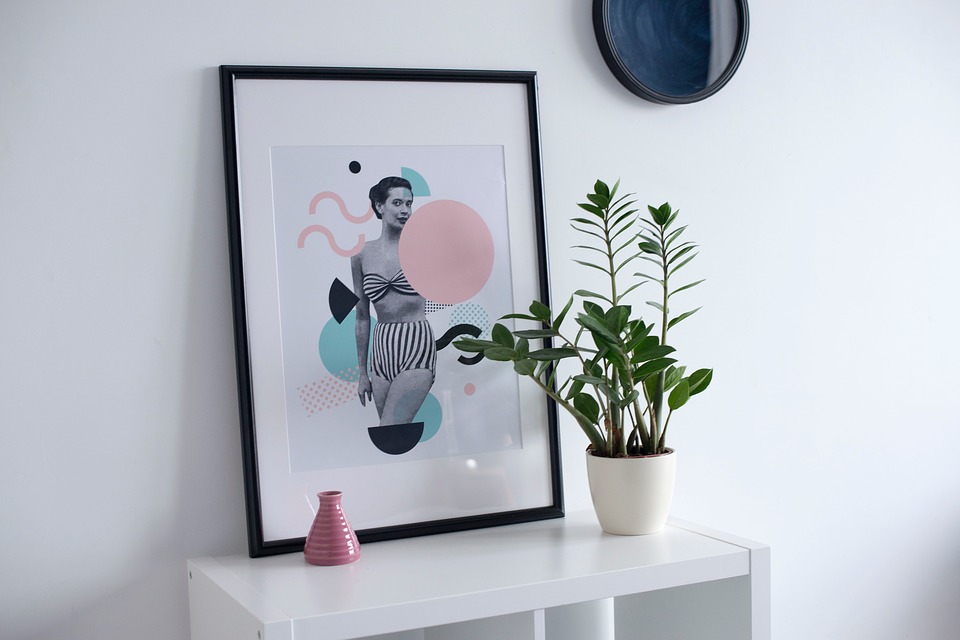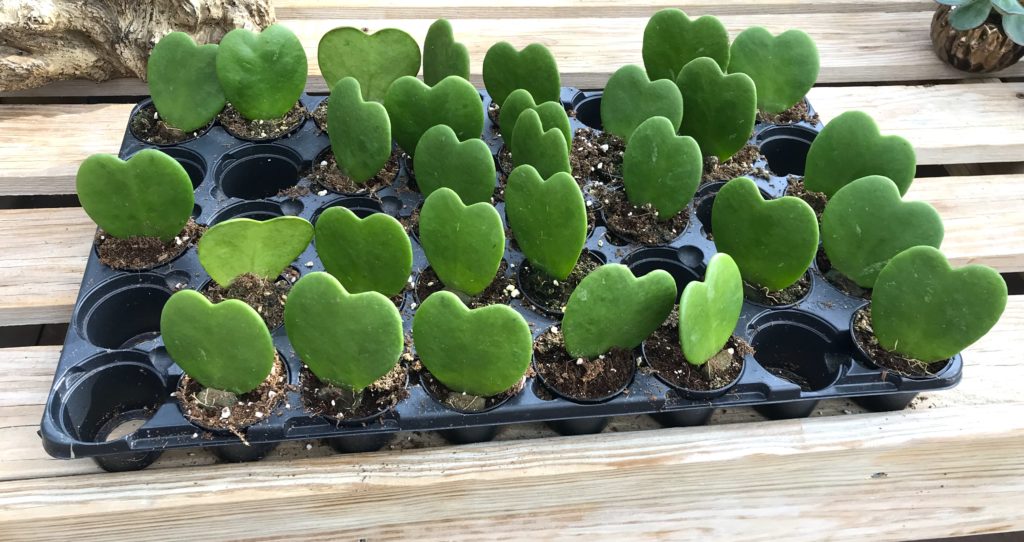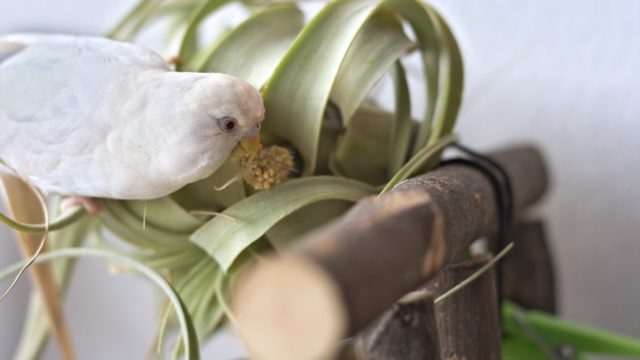
Guest post!
Written by houseplant whiz, Mari @ House Plant Central.
Don’t you just love a good plant? I’m always inexplicably attracted to more unusual looking species. And really it doesn’t get any weirder than air plants from the Tillandsia genus.

These fun, tentacled epiphytes have evolved to grow on trees rather than in soil. There’s a dazzling number of varieties out there and most of them are pretty cheap to obtain. Sounds perfect, but what about their toxicity? Those of us who have roommates of the furry (or feathered, or scaley) kind are always on the lookout for houseplants that won’t hurt them.
Are air plants toxic to pets?
I’m very happy to report that they are, in fact, not. Air plants are safe for cats, dogs, birds, reptiles or horses and don’t contain any dangerous toxins. They’re also safe for children, which comes in handy if you have a mini-me running around the house who explores everything with their mouth.
There are actually a few uses of air plants that involve pets. For example, in regions where Spanish moss (Tillandsia usneoides) naturally grows it’s sometimes used as horse feed. Reptile owners love using air plants to decorate their terrariums due to the genus’ non-toxic nature and appreciation of humid conditions. You may actually be able to find amazing air plant specimens for cheap in the reptile section of the larger pet stores.
One thing to always keep in mind is ingestion of any plant may cause problems to pets. If you find that a furry friend has managed to chew up an air plant and suspect it might have ingested part of it, brace yourself for some puke or diarrhea. Their tummies just don’t like it, but other than some standard irritation they will be okay.
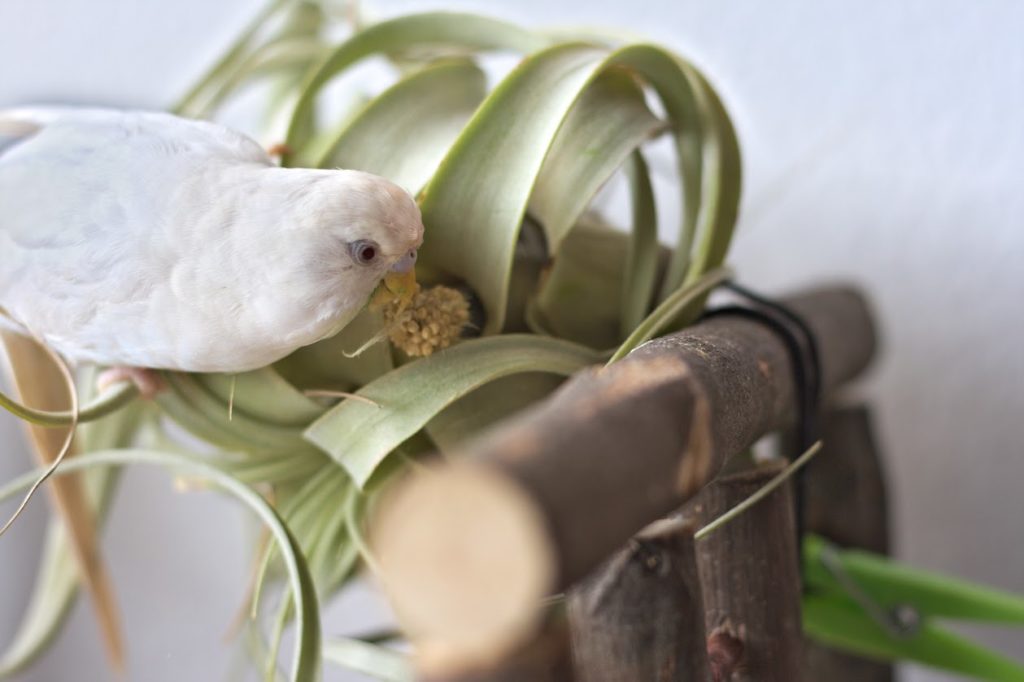
Air plant safety
Now, the fact that air plants are safe for pets and children obviously doesn’t mean they want to be chewed on. Cats especially will probably consider a small air plant an irresistible toy to toss around.
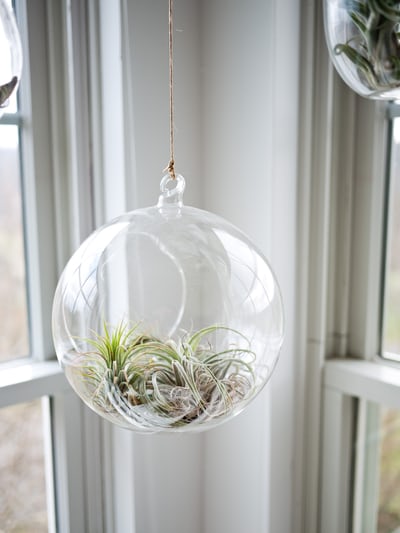
Luckily, because air plants are so small and don’t need to be grown in soil, there are endless ways to display them out of paw reach. You can just put them on a high shelf, but why not:
- Hang them from strings dangling from the ceiling or curtain rack
- Attach them to your hanging plants or their planters
- Attach them to the fridge using suction cup hooks or magnetic mini planters
- Make an air plant holder out of an empty picture frame and wire
- Macramé air plant holders to hang from the ceiling
- Make an air plant wreath to hang
Oops! Air plant emergency care
Cats are bizarre trapeze artists that can get to spots you’d never even imagine. If your furball managed to get a hold of one of your air plants and chewed on the leaves, what should you do?
You have some options:
- First, if the base of the plant is destroyed then you’re unfortunately out of options. If it’s just the leaves, though, then you might just be able to save the poor thing.
- Trim off any ruined leaves. Then, provide the usual air plant care but keep an extra close eye on the plant. Make sure the victim gets plenty of bright indirect light and stay on top of the watering.
- Once you see any new growth appearing from the center of the air plant, that’s a sign that it’ll pull through. It might start producing pups or leaves in place where there were none before. Give him space he’s just trying to adjust.
Air Plant Care Basics
I won’t go too deep into air plant care because obviously their epiphytic (meaning no soil needed) nature makes them so different from normal plants that I could dedicate whole articles to their requirements!
But let’s take a brief peek at the basics air plants need in order to thrive:
- Light: Bright and indirect please! A little bit of sun doesn’t hurt, though, especially for the fuzzy species. The fuzz, called trichomes, actually help deflect excess light from the plant.
- Water: Depends on whether your air plant is fuzzy (referred to as ‘xeric’, indicating it naturally comes from a dry habitat) or smooth (referred to as ‘mesic’, indicating it naturally comes from a moist habitat). Xeric air plants need a little less than mesic ones, although they still need moisture regularly. Air plant watering is easy and is done by spraying regularly and soaking once every week or so.
- Fertilizer: Air plants from the Tillandsia genus are Bromeliads, so you can use a Bromeliad fertilizer to feed them. A light feeding once a month during the growing season should work well.
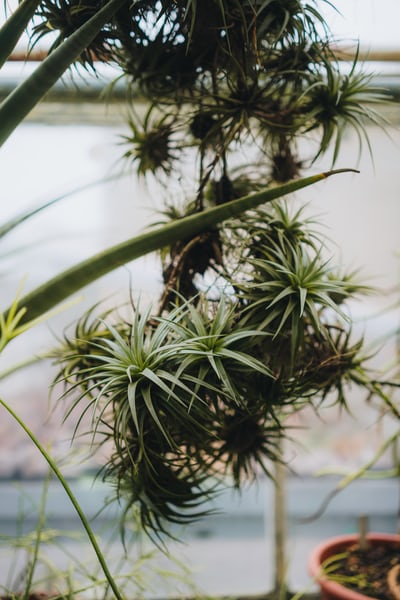
Yes, air plants flower!
One cool thing about air plants is that they flower! And quite beautifully too. The actual shape, size and color of the blooms varies between species and ranges from subtle to super showy.
Regular fertilizer use can speed up the process and help in getting your air plant to bloom, but there’s a catch. Although it can take a while before it actually happens (think more than a year), any air plant that has bloomed has essentially reached the end of its life cycle and will die.
Does this mean flowers on your air plants are more of a curse than a blessing? Not necessarily. Luckily, Mother Nature made sure not to leave us air plant-less: after blooming, the mother plant will start producing pups. These will grow on her base, either falling off eventually or forming dense clumps. Voilà!
You now have more air plants and didn’t even have to make any effort to propagate them. The only drawback is that the pups are obviously going to need a while before they’re as big as mom was.
Common air plant varieties
There are so many different air plants out there that I can’t even begin to make an attempt to describe them all to you. Collecting them all is incredibly tempting but it’s an almost impossible task!
I’m not a serious air plant collector by any means and so far I’ve only bought relatively ‘standard’ ones that are easy to find. Still, even my amateurish Tillandsia collection currently includes 10 species. Let’s discuss a few of them, all of which you should be able to find easily in your local plant store or online.
Tillandsia bergeri
This is a showy variety for sure. Tillandsia bergeri grows relatively large and they produce pups like crazy. If you like the look of dense air plant clumps (and it’s impossible not to), this species is for you. Luckily, this one is not too challenging to grow and it makes a great choice for beginning air plant enthusiasts.
Native to Brazil, Tillandsia bergeri produces a lovely blue inflorescence that actually consists of multiple small flowers bunched together. These blooms aren’t too showy on their own, but if you leave this species long enough it’ll form a big ball of offsets with flowers protruding in all directions.
Tillandsia xerographica
This guy is referred to as the ‘king of air plants,’ a name he (or she) deserves. Tillandsia xerographica is one of the most sought after Tillandsias. It features a round growth pattern and the typical greyish-green leaf color of a xeric air plant. Plus they pump out showy flowers; a combination of bright green and orange-red. Ooh.
Xerographica is probably the largest of the air plants and an adult specimen can reach the size of a basketball, with leaves spiraling down from the central ball. Really an amazing décor piece, although this is a slow grower so it can take a good while before it reaches sizes like that. Mine is about as big as my outstretched hand, which is a common size for this species to be found as in store.
Like Tillandsia bergeri, Tillandsia xerographica is beginner-proof. You just need to be extra mindful of rot, which sets in easily in the denser air plants. Make sure you air dry your xerographica well after soaking it.
Tillandsia baileyi
One of the US natives in the genus, Tillandsia baileyi is naturally found in low-altitude, dry habitats southern Texas, northeast Mexico and a few other Central American areas. Tillandsia baileyi blooms are not very fancy but they’re nice to look at and consist of multiple elongated purple flowers.
This is one of my favorite air plants because it just has no direction at all: its leaves jut out in all directions and curve randomly. This, combined with the fact that this species tends to clump, makes for big, fun, out-of-control clusters.
It’s easy to confuse Tillandsia baileyi with Tillandsia pseudobaileyi (see below), but not because of their looks. Aesthetically they look pretty different, but because the name ‘baileyi’ was stuck on pseudobaileyi, it was confusing that that one is the actual baileyi. Oof.
Tillandsia pseudobaileyi
As I said, Tillandsia pseudobaileyi and baileyi really don’t look alike at all. Baileyi has thinner, wispier leaves with more trichomes. It doesn’t really have a bulb and you’ll rarely see a solo plant, they’re very strong clumpers.
On the contrary, Tillandsia pseudobaileyi has a bulbous base and is usually sold individually. Its leaves are more rigid and smoother since they lack trichomes. The species is not found in the US, only in Central America, where it grows in higher altitude habitats.
Tillandsia pseudobaileyi flowers are not too large but they’re definitely showy, with a bright pink base that sprouts multiple little purple blooms. Quite the lookers if you have a bunch of them growing together and flowering at the same time!
Tillandsia streptophylla
You could consider this one the little sister of Tillandsia xerographica and I can see how one might confuse the two. Tillandsia streptophylla has a similar growth pattern, with the leaves curling around themselves which results in a round shape.
The most notable differences between xerographica and streptophylla are their size (xerographica gets much larger) and their curl. Tillandsia streptophylla leaves coil even tighter than those of xerographica, especially when the plant is thirsty. This is one funky air plant!
Streptophylla is probably the most showy out of the five air plants on this list when it comes to its flowers. The blooms can get almost as large as the plant itself, with orange-red stems and light green tips.
About the author!
Mari is the author behind Houseplant Central, an informative website dedicated to helping houseplant enthusiasts keep their greenery happy and healthy.
Originally from The Netherlands but living in Spain, she spends her days writing about indoor gardening in the company of two noisy parakeets and extensive houseplant collection.

